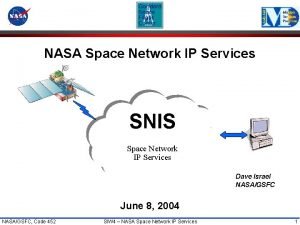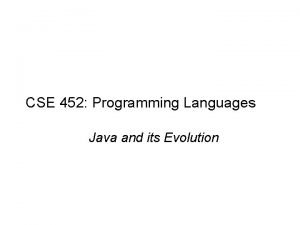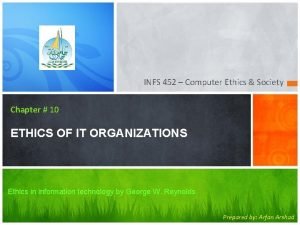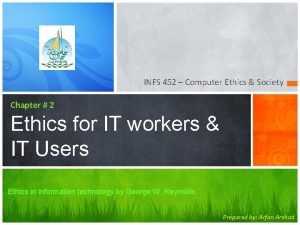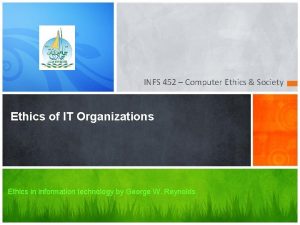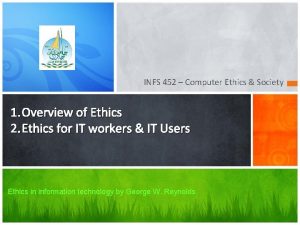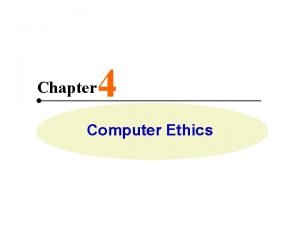INFS 452 Computer Ethics Society Chapter 3 COMPUTER














- Slides: 14

INFS 452 – Computer Ethics & Society Chapter # 3 COMPUTER AND INTERNET CRIME Ethics in information technology by George W. Reynolds Prepared by: Arfan Arshad

Overview • The security of information technology used in business is of utmost importance. • Confidential business data and private customer and employee information must be safeguarded, and systems must be protected against malicious acts of theft or disruption. • Although the necessity of security is obvious, it must often be balanced against other business needs and issues.

Types of Exploits • Virus is a piece of programming code, usually disguised as something else, which causes a computer to behave in an unexpected and usually undesirable manner. • Worm is a harmful program that resides in the active memory of the computer and duplicates itself. Worms differ from viruses in that they can propagate without human intervention. • Trojan Horse is a program in which malicious code is hidden inside a seemingly harmless program. • Botnet is a large group of computers controlled from one or more remote locations by hackers, without the knowledge or consent of their owners. Botnets are frequently used to distribute spam and malicious code.

Types of Exploits (Contd…. . ) • Distributed Denial-of-Service (DDo. S) Attacks is one in which a malicious hacker takes over computers on the Internet and causes them to flood a target site with demands for data and other small tasks. • Rootkit is a set of programs that enables its user to gain administrator level access to a computer without the end user’s consent or knowledge. • Spam E-mail spam is the abuse of e-mail systems to send unsolicited email to large numbers of people. Most spam is a form of low-cost commercial advertising. • Phishing is the act of using e-mail fraudulently to try to get the recipient to reveal personal data. • Spear-phishing is a variation of phishing in which the phisher sends fraudulent e-mails to a certain organization’s employees.

Types of Perpetrators

IMPLEMENTING TRUSTWORTHY COMPUTING

Contd……

Risk Assessment • A risk assessment is the process of assessing security-related risks to an organization’s computers and networks from both internal and external threats. • The goal of risk assessment is to identify which investments of time and resources will best protect the organization from its most likely and serious threats.

Risk Assessment Process

Establishing a Security Policy • A security policy defines an organization’s security requirements, as well as the controls and sanctions needed to meet those requirements. • A good security policy delineates responsibilities and the behavior expected of members of the organization. • A security policy out-lines what needs to be done but not how to do it. • The details of how to accomplish the goals of the policy are provided in separate documents and procedure guidelines.

Educating Employees, Contractors, and Part-Time Workers Employees, contractors, and part-time workers must be educated about the importance of security so that they will be motivated to understand follow the security policies. For example, users must help protect an organization’s information systems and data by doing the following: • Guarding their passwords to protect against unauthorized access to their accounts • Prohibiting others from using their passwords • Applying strict access controls (file and directory permissions) to protect data from disclosure or destruction • Reporting all unusual activity to the organization’s IT security group

Prevention from threats • Installing a Corporate Firewall • Intrusion Prevention Systems • Installing Antivirus Software on Personal Computers • Implementing Safeguards against Attacks by Malicious Insiders • Conducting Periodic IT Security Audits

Detection • Even when preventive measures are implemented, no organization is completely secure from a determined attack. • Thus, organizations should implement detection systems to catch intruders in the act. • Organizations often employ an intrusion detection system to minimize the impact of intruders. • An intrusion detection system is software and/or hardware that monitors system and network resources and activities, and notifies network security personnel when it identifies possible intrusions from outside the organization or misuse from within the organization.

Question & Answer Session







